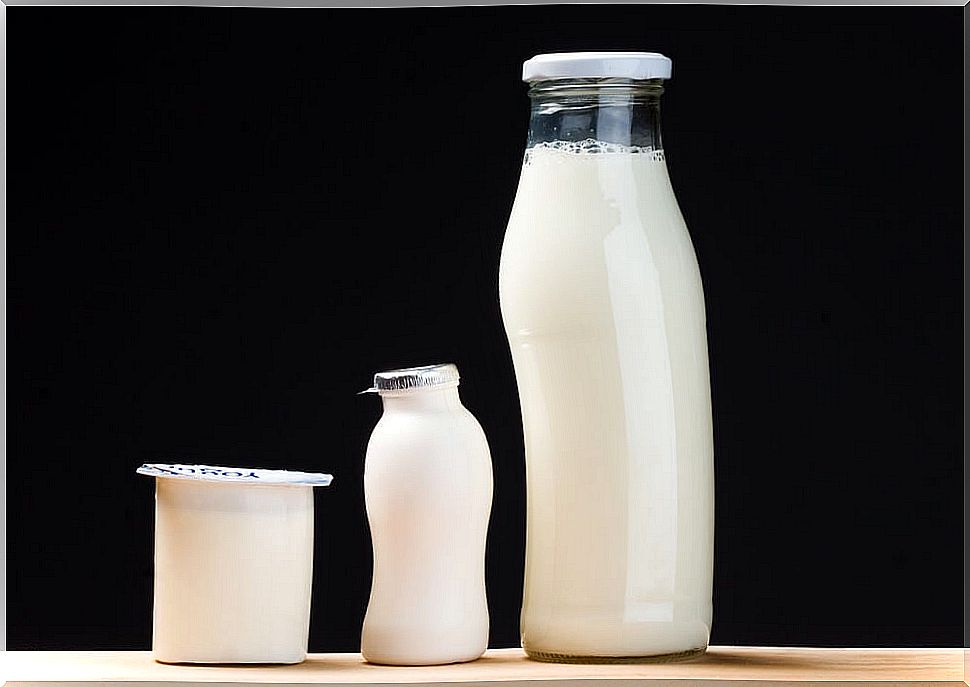5 Lactose Facts We Should Know

Lactose is made up of glucose and galactose, two simple sugars that the body uses directly for energy and something else. Therefore, in this article we are going to present 5 facts you should know about lactose.
1. Lactose is produced exclusively in the mammary glands
Only breast cells can make this sugar. Lactose is a type of sugar called a ‘disaccharide’, which means that it is made up of two simple sugar molecules chemically linked together : glucose and galactose.
Humans cannot absorb this double sugar when it is intact, so our bodies need to break that bond between individual sugar molecules. Once glucose and galactose are released, they are easily absorbed.
The breakdown of lactose is carried out by the activity of an enzyme called lactase that is produced in the cells of the intestine. When the enzyme lactase is not sufficiently present in the intestine, the sugar reaches the large intestine intact. There, it interacts with bacteria, creating the uncomfortable symptoms of lactose intolerance.

2. The ability to use lactose is limited in nature
This trait is not necessarily a limitation, rather, it looks like an evolutionary advantage for mammals. We must bear in mind that the most abundant carbohydrates in nature contain concatenated units of glucose. This is coupled with the fact that bacteria, the most abundant living things in nature, love to eat sugars. Thus, most bacteria have the necessary machinery to process this type of sugar.
In this context, only bacteria that have the ability to digest lactose could colonize the milk, either in the mammary gland or in the baby’s digestive tract. Therefore, the distinction of containing glucose / galactose in lactose may have offered a protective effect.
3. Digestion of the disaccharide involves more than supplying energy
The galactose that is released from the digestion of sucrose performs several biological functions. For example, it is part of several macromolecules that make up the membrane of nerve cells, such as cerebrosides, gangliosides, and mucoproteins.
Furthermore, galactose is also a component of the molecules present in blood cells that determine ABO blood groups.
4. The lactose content is different from one species to another.
It is easy to assume that the milk of each species has a composition that suits the needs of the young very closely. In human milk, lactose is the most abundant component.
Human milk contains 7.2% lactose, one of the highest concentrations of sugar in mammalian milk. Surprisingly, it is not cow’s milk, but zebra’s milk, at 7%, that most closely resembles human milk.

It is recognized that the production of lactose in each species is closely linked to its evolution and the ecological niche it occupies. Species that fast during lactation, including bears and whales, produce milks with very little lactose. On the other hand, species that lactate for long periods, such as humans, produce milk with a higher concentration of lactose.
Thus, if you have difficulties digesting the lactose in cow’s milk, you should avoid drinking monkey’s milk, as it contains 8% lactose. On the other hand, seals produce almost lactose-free milk. But beware! Because it also contains 70% fish-flavored fat and is probably not the most appetizing option to combine with your cereal.
5. A sweet secret: industrial use
In addition to food sources of lactose, this sugar is found in small amounts in a wide variety of medications. This use is common due to its excellent properties as a compressing excipient.
For this reason, this disaccharide is a frequent component in drugs in tablet presentation, although it is also available in other pharmaceutical forms, such as capsules or sachets.
However, amounts below one gram have been shown to be safe for those who do not digest this sugar well. Therefore, it is important to know that, in most medicines, lactose only reaches the order of milligrams.










